Walkabout with Montrose: Parlez-vous French Flat?
This is the third piece in a series about the development of multi-unit housing in Brooklyn. The French Flat was marketed to the growing middle classes. In 1885, a writer commenting on the state of housing in Manhattan wrote: NY is a city without homes. 2/3 of the population lives in tenements, and the remainder…

MacDonough Street in Bed Stuy. Photo by Suzanne Spellen
This is the third piece in a series about the development of multi-unit housing in Brooklyn. The French Flat was marketed to the growing middle classes.
In 1885, a writer commenting on the state of housing in Manhattan wrote: NY is a city without homes. 2/3 of the population lives in tenements, and the remainder either occupy palatial but cheerless brownstone fronts, or board.
The rich and poor are increasing, while the great middle class of thrifty and intelligent people are being crowded into the suburbs.
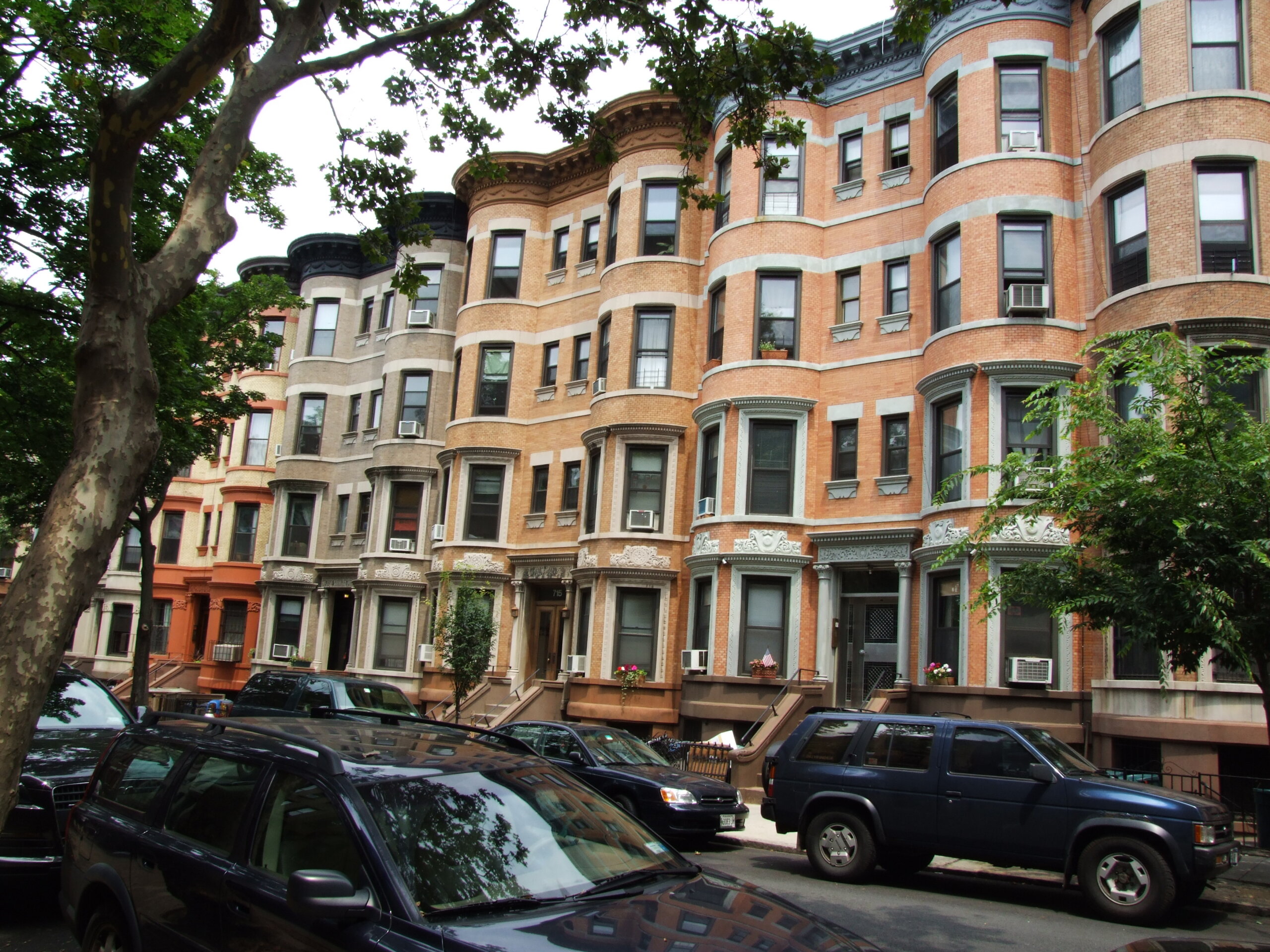
Because of improvements in mass transportation, including the building of the Brooklyn Bridge, railroad and trolley lines, the middle class was encouraged to move to the far reaches of Harlem, or Brooklyn, where single family ownership of a modest row house was still possible.
But even in Brooklyn, there still was not enough housing for people who were well off enough to avoid the tenements, but not rich enough to buy a large single family house.
The obvious answer was a multi-family building, better in every way than a tenement, and affordable to the wide range of incomes making up the middle class. The apartment, or flats building was born, but it was not an easy sell.
The word apartment had been in use in England and France since the 1700’s, where it only referred to a set of rooms, not necessarily shared with other people.
The term flats originated in Edinburgh and London in the beginning of the 19th c. in reference to a group of rooms on one floor of a building.
In NY, by the mid 19th c, the term referred to units in row houses that had been altered and subdivided, and by 1874, the phrase French Flats was officially entered into the DOB books, as a multiple-unit dwelling, and fell under the rules and laws that governed tenements.
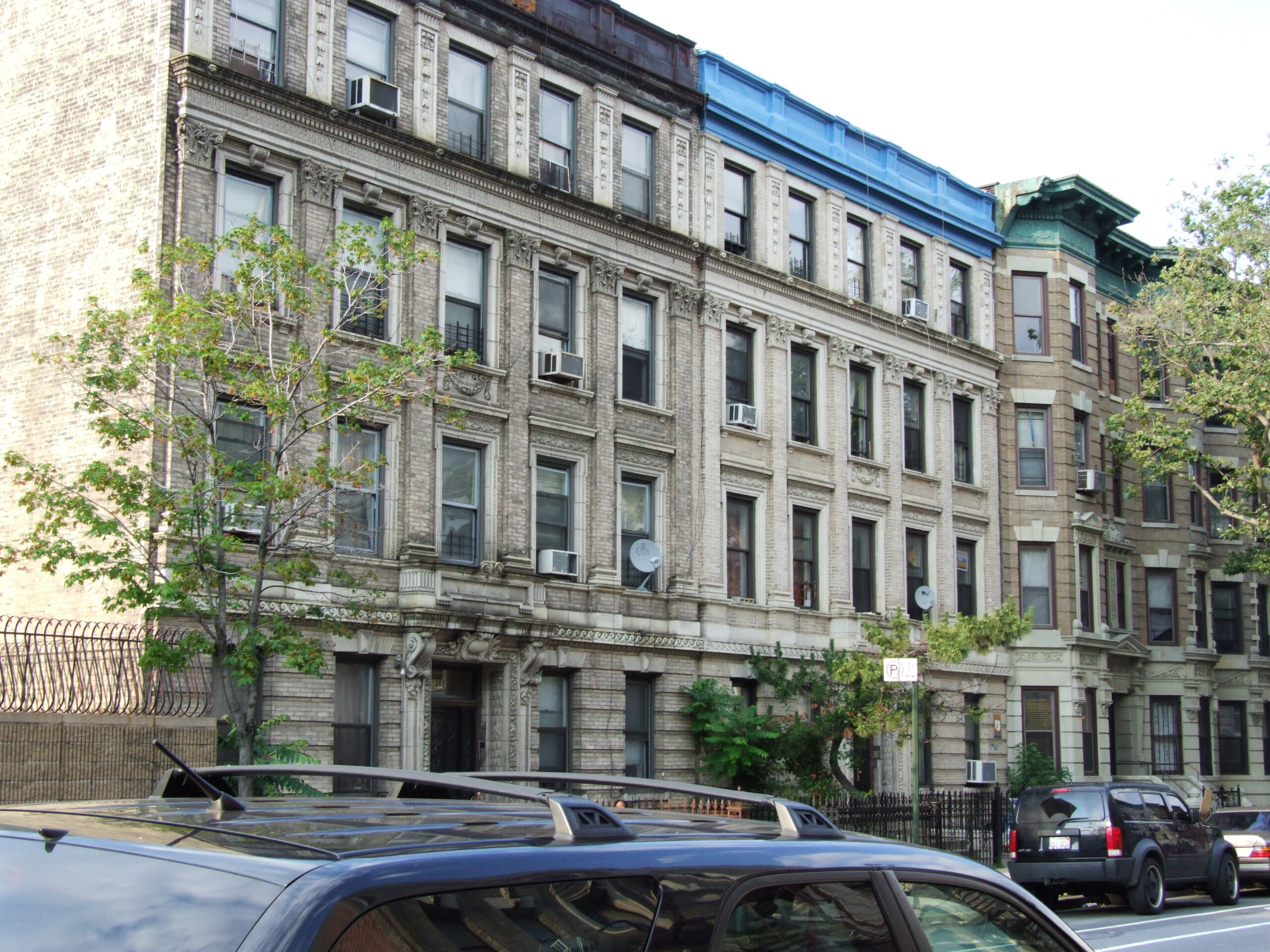
The biggest difference between a high end tenement and a low end flat was that each flat was equipped with sanitary facilities inside each unit. Many low end flats buildings are indistinguishable from tenement buildings from the outside, and often from the inside, too.
Those building for the bourgeoning middle class had their work cut out for them. Most people of decent means did not want to live in a building with strangers, or in a building that could be mistaken for a tenement.
So developers looked to the Parisian apartment house as the standard of perfection. Calling the buildings French Flats evoked the romance, allure and sophistication of Paris in an attempt to draw in customers.
Some of the most influential architects of the time built 4 story, 8 unit buildings with charm and sophistication, using materials and ornament similar to the single family row houses and mansions of the day, which they also designed.
They often named the buildings with women’s names, or posh British and European sounding names in an attempt to give them more class and élan.
These buildings, as well as larger apartment buildings, were built in the same developing middle class neighborhoods that were drawing people in growing numbers; Brooklyn Heights, Clinton Hill, Bedford, St. Mark’s, Park Slope, Cobble Hill, Fort Greene, and more.
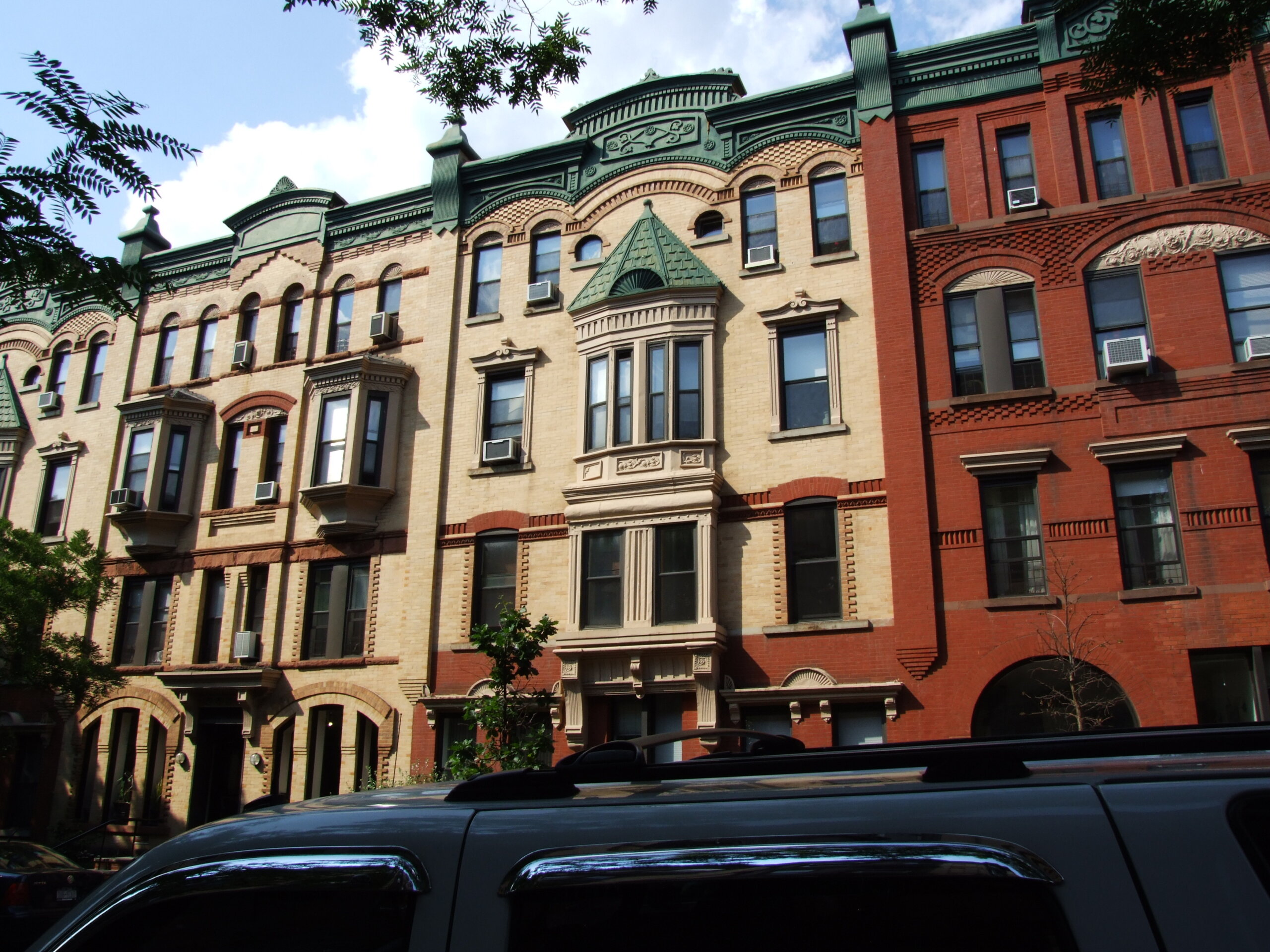
The average higher end, 8 unit flat building had two apartments per floor, one on either side of a center stair. The front door opened to a parlor facing the street, often with a smaller library area. A hallway ran down the length of the apartment with bedrooms and bathroom along its length, ending in a dining room, kitchen, and maid’s room.
The invention of the passenger elevator in the 1880’s enabled builders to build higher than four stories, more amenities and innovations in modern living were added, and slowly, very slowly, the flat grew in popularity, as the need for housing in the city overwhelmed many of the objections people had towards multiple-unit dwellings.
That’s not to say there weren’t plenty of critics, and plenty to criticize. On Sept. 24, 1899, the NY Times stated, “To call the things actually provided for tenants of this class ‘French Flats’ is to insult a friendly nation . . . The ‘court’ has been shrunk by the speculative builder to what he calls a ‘light shaft’ and what is in fact a flue, a conduit, not for light and air, but for sounds and smells.”
At the bottom and middle end of the price spectrum, there were plenty of complaints about the thinness of walls and floors, and being able to hear the personal business of strangers.
More practically, many of these flats were small, having only 4 to 5 rooms, often in the same room configuration as the tenements, making family room tight.
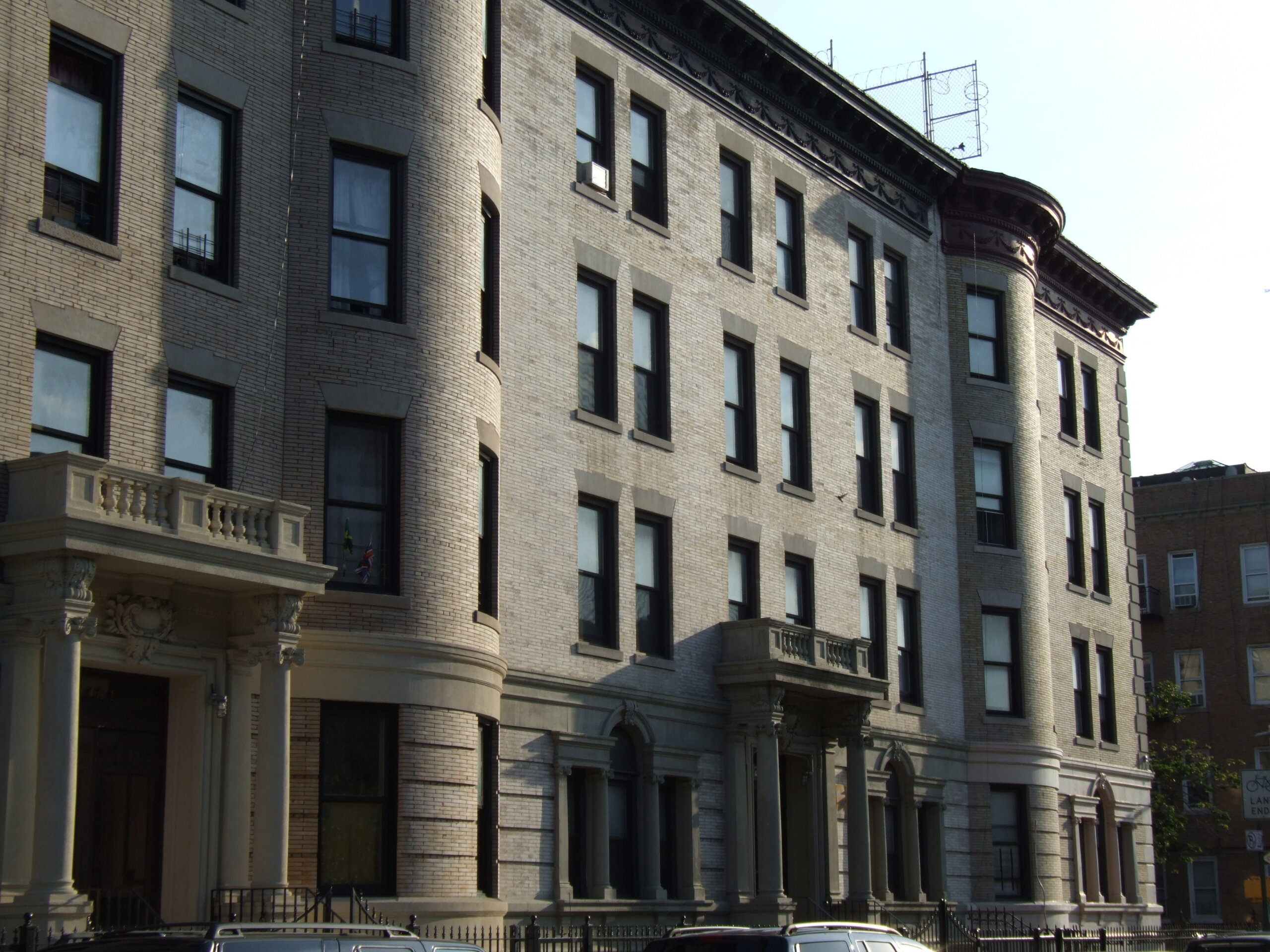
There weren’t enough closets, and often, not enough light or air coming in inadequately sized light shafts. Socially, the risque charm of Parisian flat living was seen by many as dangerously decadent Euoropean behavior, promoting promiscuity and the destruction of family life, none of which should appeal to good American families.
For many years, and for many people, living in a flat continued to be associated with young childless couples, bachelors and working women, and widows and widowers, or as one wit put it, the newly-wed and the nearly dead. Doesn’t this all have a ring of familiarity? My Flickr page has some classic facades.
Information for this article gleaned from LPC reports, NYT archives, and 3 fascinating books: Building the Dream: a social history of housing in America, by Gwendolyn Wright, A History of Housing in New York City, by Richard Plunz, and Alone Together: a history of NY’s early apartments, by Elizabeth Collins Cromley.
[Photos by Suzanne Spellen]
Next time: the wealthy have to live somewhere, too the luxury apartment building.

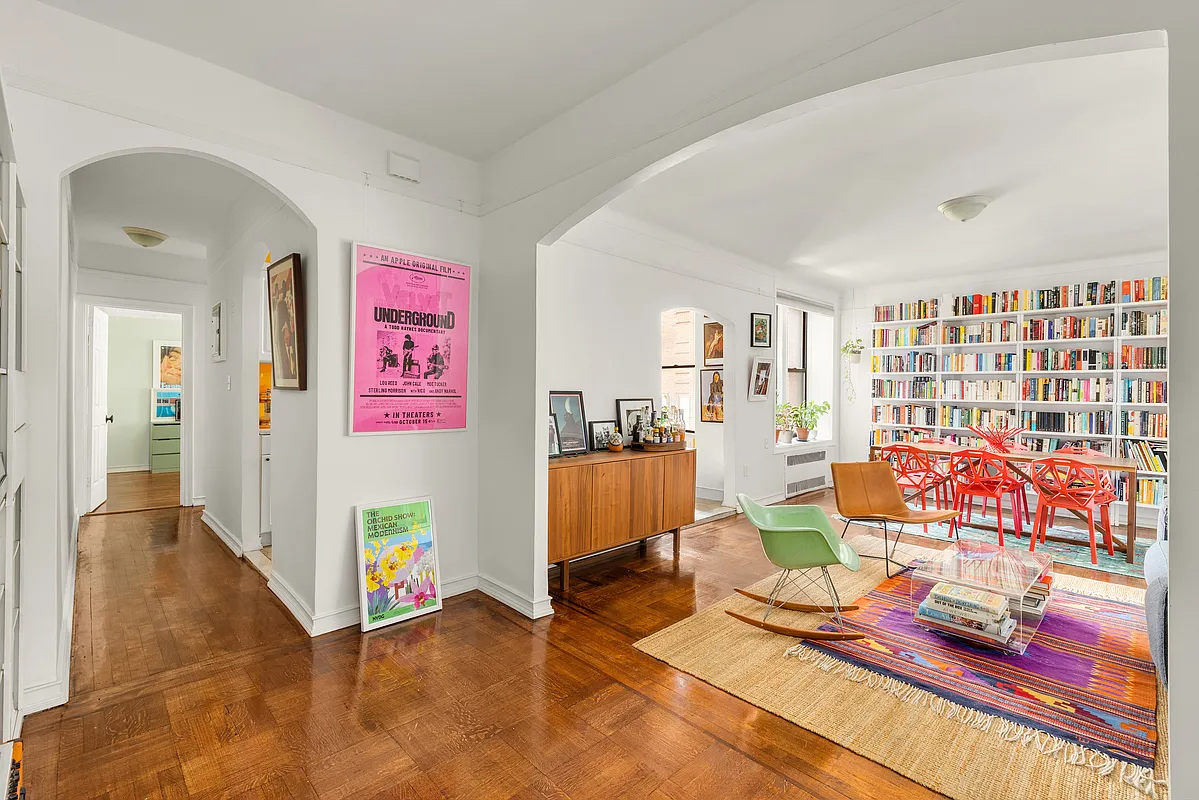
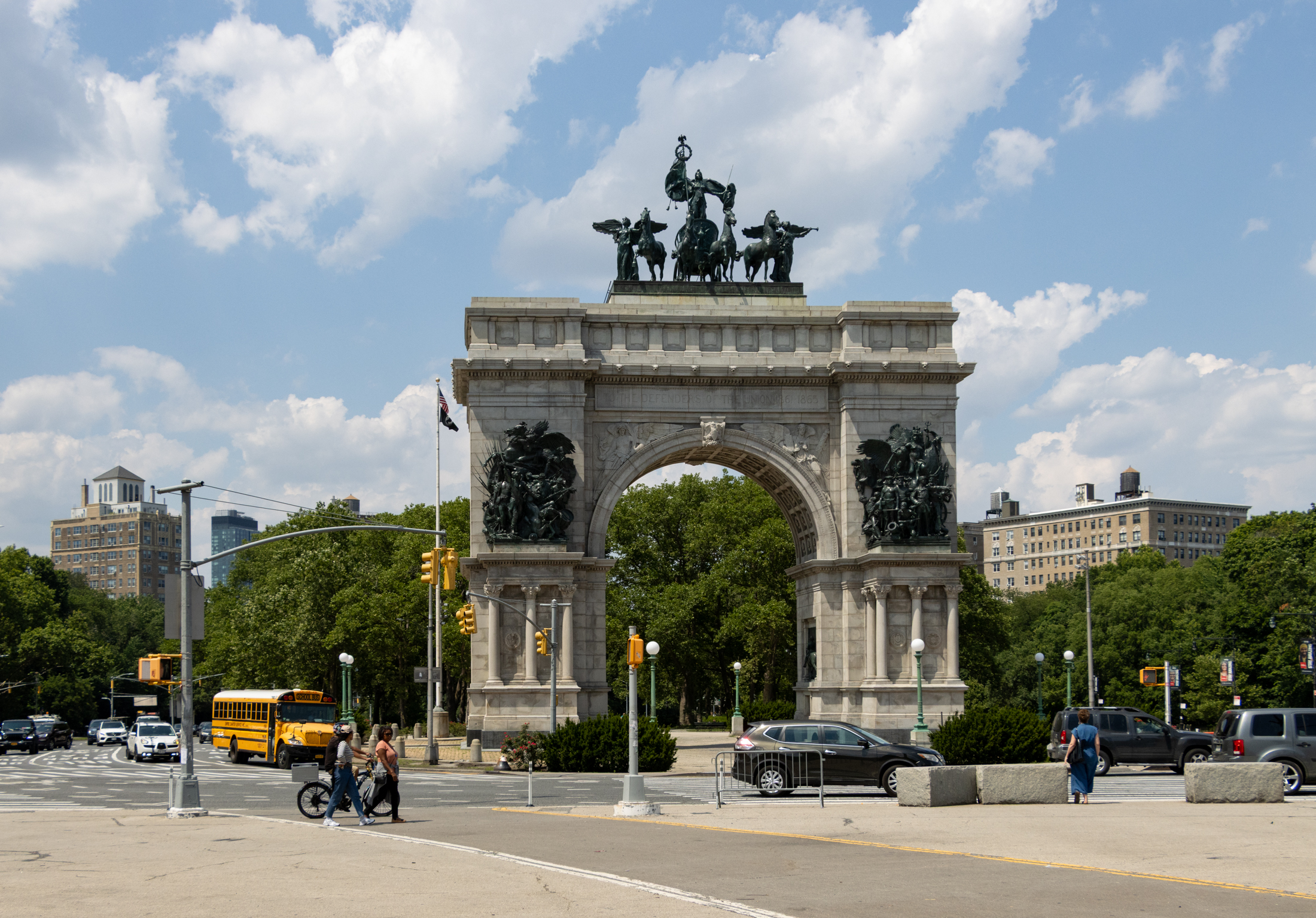
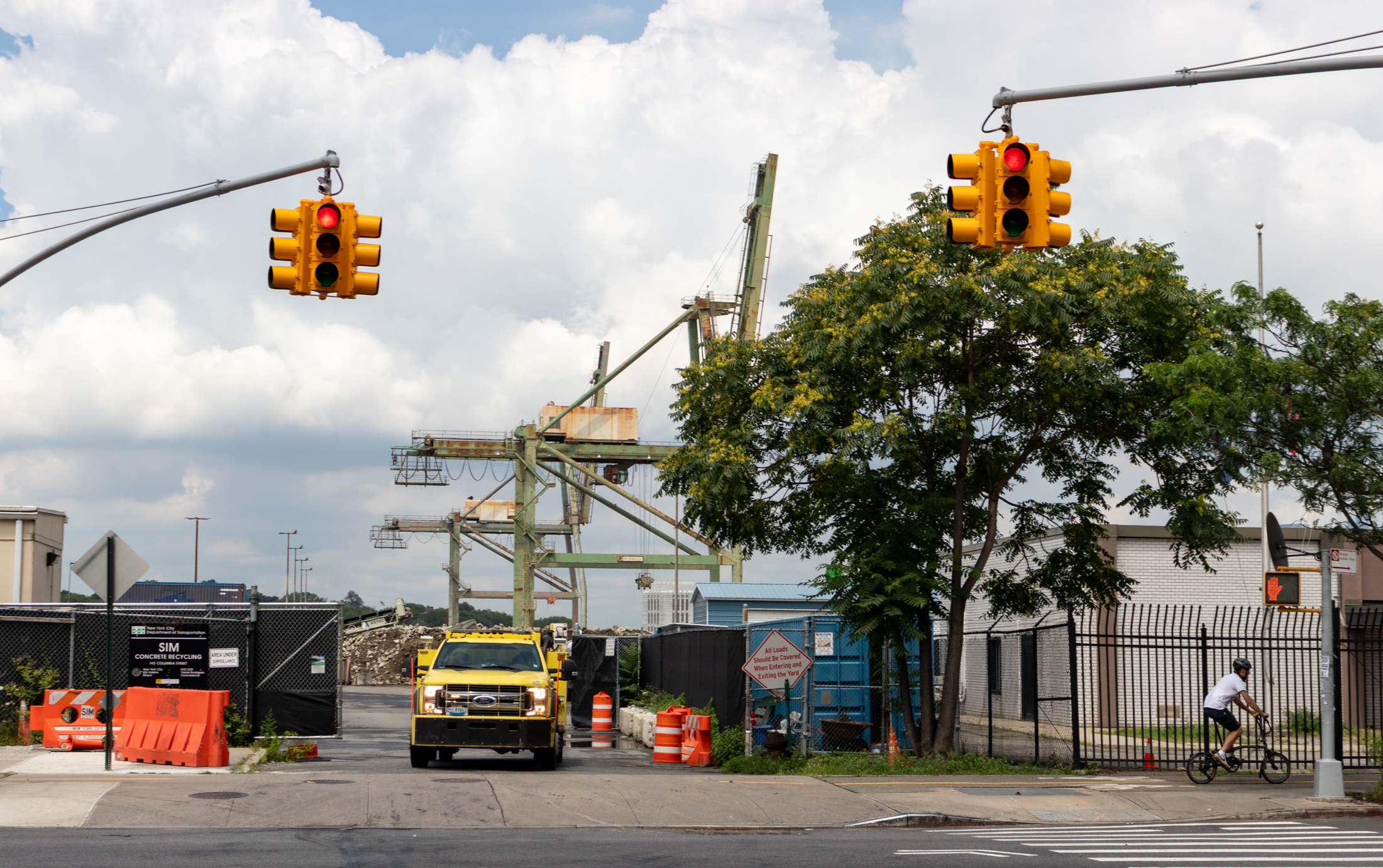
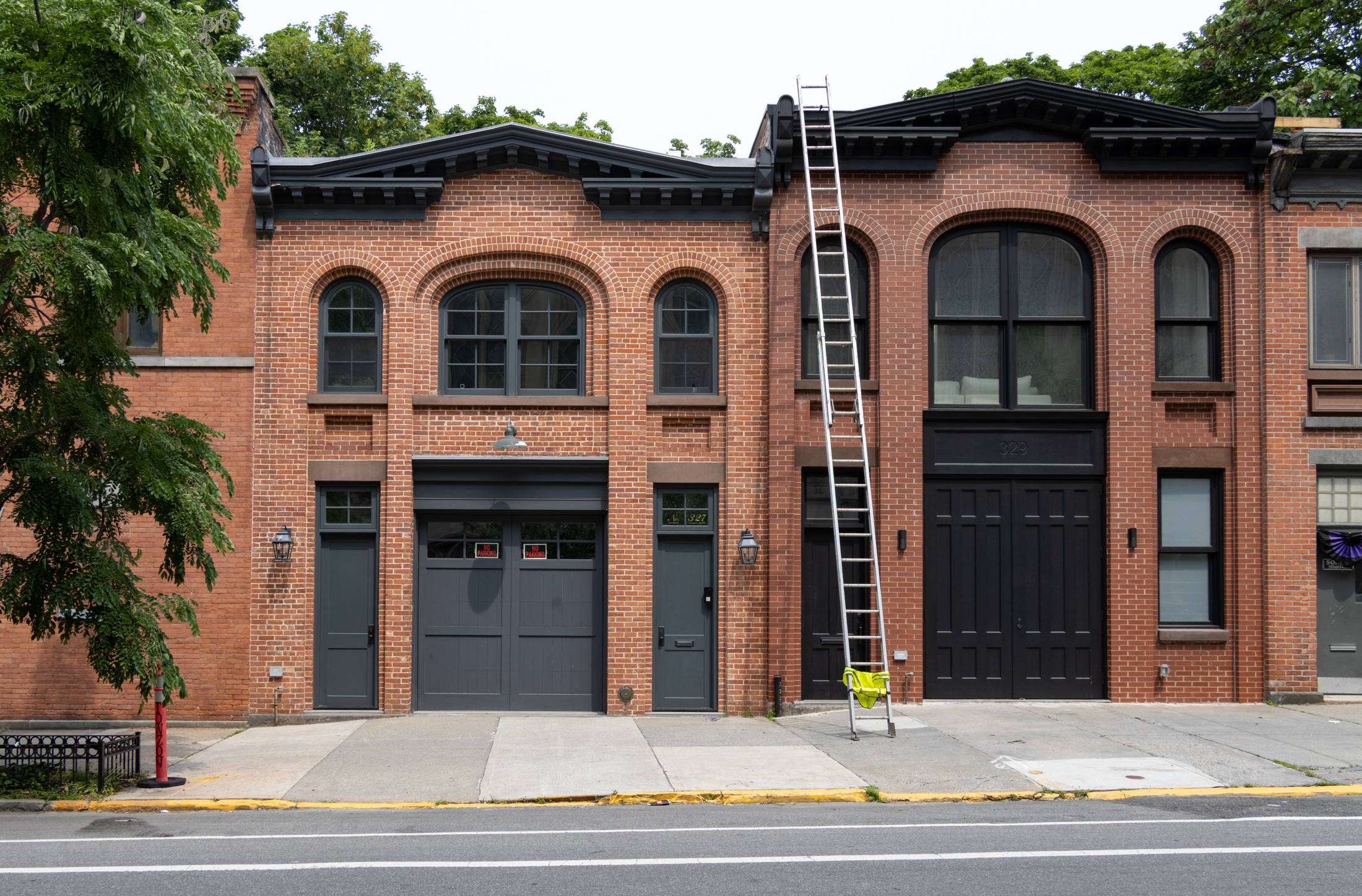
BHO, even an average photographer does well with a great subject. The hood really is beautiful when one stops to appreciate it. Lots of us have been saying that for years.
Glad this story resonated with people, too. Some of the comments regarding apartment living at the time, and the attitudes towards it are priceless enough that I’m going to feature them at the end of the series. What I find interesting is that the more things change, the more they stay the same.
BTW, closets were shallower back then because, as bxgrl said, people didn’t have as many clothes, they didn’t hang as much up as we do, a lot of items were folded and in dressers, trunks, etc, and most importantly, were hung in the existing closets facing the wearer, on hooks on the back wall and on the sides, even if on a hanger, not sideways, on a pole.
For what it’s worth, I took this photo a while back. I actually didn’t use any of the pix I took on Sunday, this week. I had to post the story early, as I have a gig this week that doesn’t allow me computer access.
Sorry to hear that, but it seems strange that they would mind or notice, since there are folks taking pictures of the buildings on this block all the time.
i was walking past the flats on macdonough st in may and i picked up my big obtrusive camera to take a photo of them and the kids on the stoop of those buildings yelled at me (from across the street, no less) and threatened to bust in my head.
kind of a non sequiter, but its nice to see the good photo of them i wanted.
I do! (where’s my damn barbie…grrrr!!!)
Rob, good one. hehehe
maybe bxgrl likes playing with the kiddie toys & stuff in there and doesn’t want to come out
Always wondered about the Macdonough st houses. I couldn’t tell from the outside if they were once single family.
quote:
“bxgrl, kiddie gear, toys, clothings is what’s chewing up tons of my storage space.”
please let bxgirl out of your closet!
*rob*
bxgrl, kiddie gear, toys, clothings is what’s chewing up tons of my storage space.